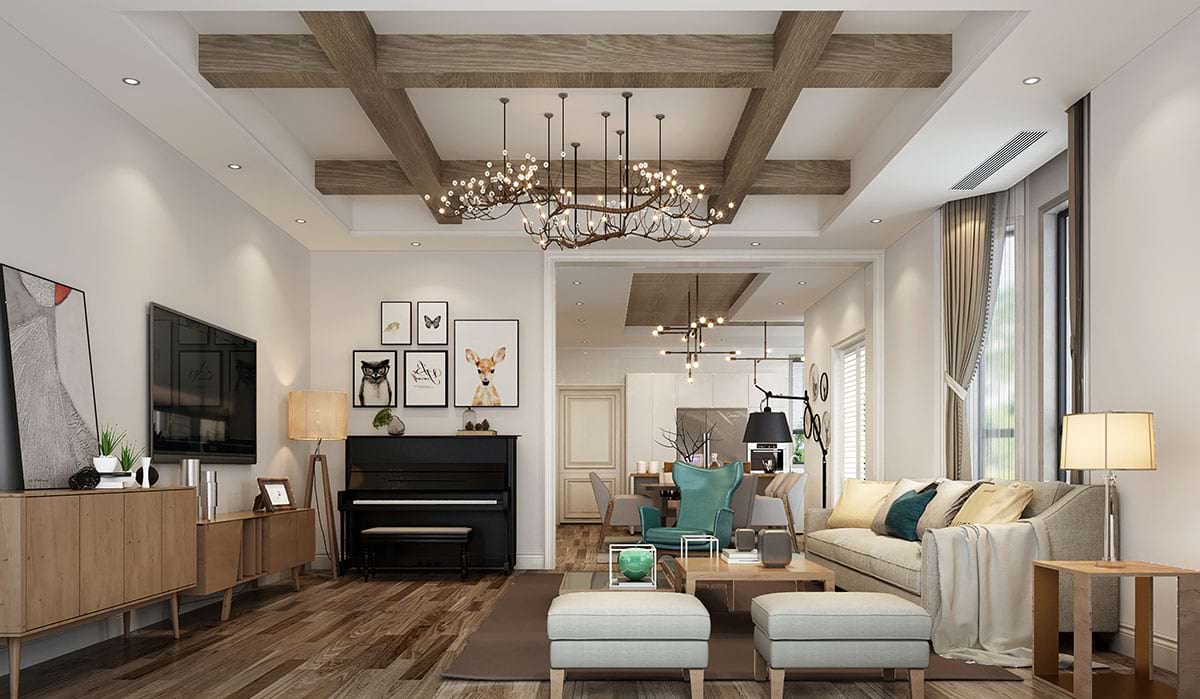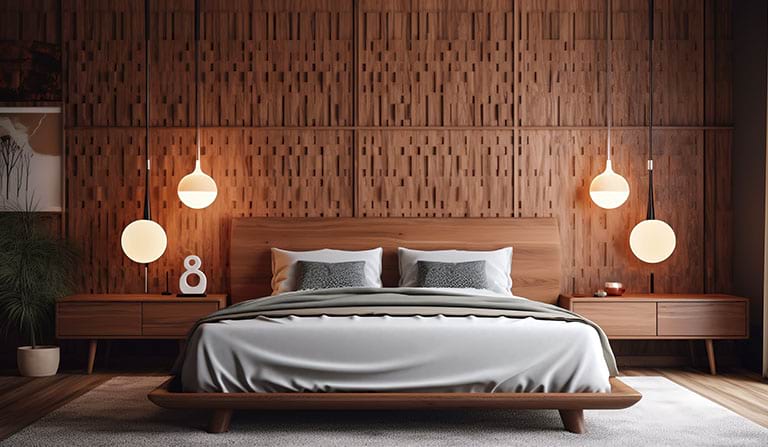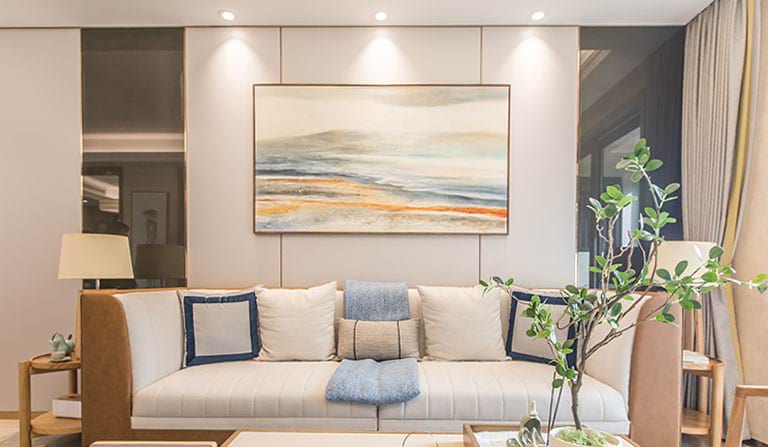10 Essential Living Room Lighting Ideas
Illuminating a space might be a complex and challenging endeavor. If you find yourself at a loss, you’ve arrived at the perfect destination. Allow us to spark your creativity with our 10 living room lighting suggestions. This is intended to streamline your undertaking and facilitate the ultimate choice(s). After all, a room should effortlessly combine style and practicality, shouldn’t it?
In this discussion, we will be covering the four categories of lighting, identifying the most suitable option for a living room, and presenting our top 10 living room lighting suggestions. Our goal is to provide you with our insights, while also inspiring you to develop some unique ideas of your own!
1. Layer the light
The concept might appear obvious, but due to its immense value, it’s worth reiterating. It’s well-known that our living rooms accommodate the most diverse range of activities compared to any other room, with the kitchen being the only close competitor (particularly if it also functions as a dining area). To create layered lighting, you need to incorporate various lighting types to cater to the multiple purposes they fulfill in your living room.
In a small room, a functional lighting arrangement could consist of an overhead chandelier, a corner-located floor lamp directed towards the ceiling, a desk lamp in the corner for task-oriented activities such as homework, a pair of table lamps flanking a sofa near the wall, an LED strip light installed behind the television, a plug-in light positioned near the nearest outlet to the light switch, and a compact spotlight situated within the closet.
2. Splash some color in
Incorporating color into your living space, be it through decorative lighting, wall paint, or the light bulbs themselves, can genuinely transform the room into a welcoming environment. The appropriate choice can significantly enhance your mood. (Expert advice: Utilize colored illumination in specific zones to generate a unique radiance).
3. Use a mirror or two
Incorporating mirrors into your living area can significantly enhance its brightness by reflecting light. Positioning them opposite a window amplifies a room’s natural light. If you’re still not convinced, introducing one or more mirrors, particularly sizable ones, generates a perception of increased space.
4. Incorporate adjustable lighting
Dimmer switches have been a staple in lighting systems for quite some time, with living rooms being the perfect location for their use. Increase the brightness during family gatherings or when people are engaged in tasks, and lower it for intimate occasions or movie watching. Smart-enabled bulbs are now increasingly sought-after and essential for managing multiple lights simultaneously. Furthermore, you can adjust both intensity and color (subject to the bulbs employed) via voice commands or an app, making it incredibly convenient.
5. Put up fairy or string lights
Fairy lights consist of a series of closely positioned miniature light bulbs, primarily utilized for enhancing aesthetic appeal and atmosphere rather than functioning as a primary lighting source, due to their limited brightness. These lights deliver a captivating warmth to any space with their gentle, sparkling glow.
Conversely, string lights consist of a series of tiny, medium, or sizable bulbs arranged evenly on an electrical wire. Picture the lights commonly used to adorn Christmas trees or wedding venues. Due to their increased brightness compared to fairy lights, string lights can effectively illuminate a space for intimate or exceptionally laid-back occasions.
Both options provide convenience and simplicity in use. Additionally, they offer a reasonably cost-effective method to transform your living space. However, it is crucial to adhere to the subsequent guidelines; otherwise, the desired enchanting ambiance may be substituted by an unappealing, visually uncomfortable exhibition. The essential principles are:
-
- Select colors intentionally. Warm white is always a safe option. Utilizing other colors can be challenging, but manageable if they consist of only one hue. Even for seasoned designers, multicolor lights are rarely the appropriate selection.
- Linkable lighting reigns supreme, especially if a single set doesn’t provide enough illumination.
- Maintain a consistent lighting setup at all times. This implies that, despite having the ability to alter the bulbs’ flashing patterns or colors, reserve such features for your Christmas tree. You will appreciate this advice later on.
- Discover motivation. Seek out creative ideas on social media platforms, websites showcasing wedding arrangements, and beyond. Incorporate string lights into your decorations, or even create a decor piece solely from the lights. Arrange them above a picture display area. Safely and discreetly string them throughout the living area. Suspend them from your living room walls or ceilings. Highlight art pieces or other features. Frame the windows or entrance to your living space. The possibilities are endless, provided you position your lights thoughtfully.
6. Implement symmetry
Achieving equilibrium and harmony through symmetry contributes to a sense of tranquility in a living room, enabling individuals to unwind. While some designers suggest the necessity of a central focal point in the space, alternative methods can also be effective in generating balance, even in an asymmetrical setting. One prime illustration of this is utilizing several matching light sources, like a pair of lamps positioned at either end of a sofa.
Ensure that you accurately interpret the area when implementing symmetry. Recessed lighting typically exhibits a balanced distribution; however, an uneven distribution may be necessary for sloped or vaulted ceilings. Interestingly, both symmetrical illumination (evenly dispersed light) and asymmetrical illumination (light concentrated on a specific object or zone) can achieve the objectives of symmetry when utilized in recessed lighting.
Achieving symmetry doesn’t necessarily require exact matching; instead, focus on establishing a feeling of equilibrium and congruity. By accomplishing this, you’ve effectively utilized symmetry to your advantage.
7. Reject symmetry
Conversely, if you find symmetry too rigid, consider embracing asymmetry! The advantages of an asymmetric layout include its relaxed feel and the ability to produce distinctive designs while maintaining a laid-back atmosphere. Given that living rooms are the second most informal space in a home after bedrooms, utilizing this design approach is quite logical.
Concentrate the illumination on your eye-catching art pieces or emphasize other organic central features in the living area. Elegantly designed lighting items can further enhance the asymmetric aspect. Regardless of your choice, significant alterations aren’t necessary. Frequently, minor decisions prove to be as effective, if not more, than larger ones. Lastly, ensure that all your components harmonize in an appealing manner. For some, a single misplaced element has the potential to disrupt the entire setting.
8. Make a statement
Spanning from modest and straightforward to daring and intricate, statement lighting is designed to captivate attention and showcase your character. This type of lighting conveys your identity and preferences while accentuating specific attributes of your area. Achieving the perfect balance in your living room can be challenging, but we will guide you by highlighting several crucial factors to keep in mind.
Initially, consider the function your item will have within the overall living room layout to guarantee a harmonious integration. For instance, does the item’s style contribute positively to the ambiance of your living room (as intended), or is it too overpowering? Does the item effectively bring together all the design components, or does it conflict (and not in a favorable manner)?
Secondly, identify your motivation. Understand the message you wish to convey about yourself and your family, as it will significantly affect your ultimate selection. Thirdly, unless you plan on frequently replacing the item, opt for a timeless choice that complements various designs and styles. Lastly, decide the intended effect of the piece on others. Will it convey a subtle message or make a bold statement with its vibrant colors, style, and form?
9. Go for a specific look
Regardless of your preferred aesthetic, be it vintage, current, classic, cutting-edge, neoclassical, industrial, country-style, fluid, minimalistic, or any other well-known interior design theme (or perhaps you wish to revive neon!), it is essential to maintain consistency throughout your entire living space. This encompasses lighting as well.
Certainly, it’s possible to combine traditional and modern elements or bend the rules for an exceptional statement light, as numerous individuals do. However, if you wish to attempt this, you must identify a shared characteristic among the components to prevent your living room from appearing tasteless.
10. Focus on the feels
We highly recommend reviewing “The Significance of Lighting as the Essential Design Element” if you haven’t already, as it delves into the numerous ways lighting impacts various aspects, such as our emotional state and overall mood.
In the living room specifically, it is essential to incorporate gentle, warm lighting options that are not unpleasant to the eyes. This will create a welcoming and comfortable atmosphere for anyone visiting the space. Achieving the ideal ambiance typically necessitates the use of various light sources. Position floor lamps adjacent to armchairs for a snug reading spot or in areas where the light will be maximized through reflection. Utilize pendant lights or chandeliers that solely emit indirect illumination to draw focus upwards.
Conclusion
Today, we discussed numerous topics, but before we part ways, here’s an additional suggestion apart from lighting: periodically altering your living room’s paint, furnishings, drapes, flooring, carpets, ornaments, and lighting fixtures can maintain its fresh appearance. It’s not even necessary to completely transform the whole living room; just one or two modifications will suffice.
Indeed, illuminating a living room can be complex, yet it need not be challenging. We trust that you found our 10 living room lighting suggestions and the guiding principles valuable in your quest for the ideal living room illumination. Additionally, we have an impressive selection of modern lighting options for you to consider!




Leave a comment
You must be logged in to post a comment.